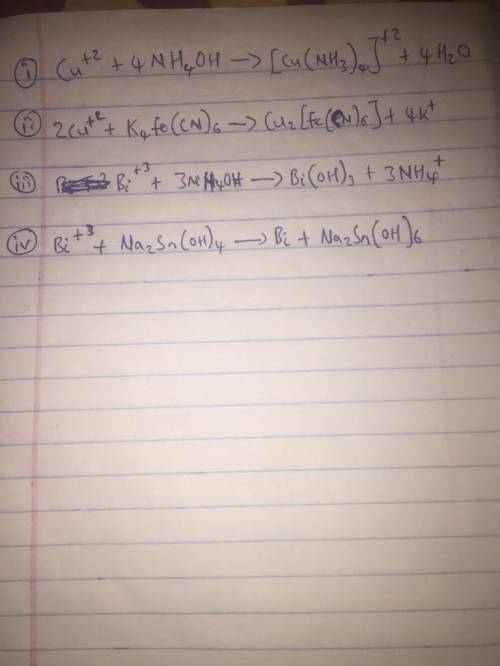
Chemistry, 25.03.2021 19:20, aloading2256
(12pts) Separation of Copper(II) and Bismuth(III) Ions Procedure Number and Ion Test Reagent or Technique Evidence of Chemical Change Chemical(s) Responsible for Observation [6] Cu2 NH4OH Deep blue solution [Cu(NH3)4]2 [7] Cu2 C-Test K4[Fe(CN)6] Red brown ppt K2[Fe(CN)6] [8] Bi3 NH4OH White ppt Bi(OH)3 [9] Bi3 C-Test Na2Sn(OH)4 Black ppt Bi (12pts) Enter the chemical equations for the test and the confirmation test.

Answers: 3
Other questions on the subject: Chemistry




Chemistry, 22.06.2019 14:30, Dreynolds1667
100 grams of molten lead (600°c) is used to make musket balls. if the lead shot is allowed to cool to room temperature (21°c), what is the change in entropy (in j/k) of the lead? (for the specific heat of molten and solid lead use 1.29 j/g⋅°c; the latent heat of fusion and the melting point of lead are 2.45 × 104 j/kg and 327°c, respectively.)
Answers: 1
Do you know the correct answer?
(12pts) Separation of Copper(II) and Bismuth(III) Ions Procedure Number and Ion Test Reagent or Tech...
Questions in other subjects:


Mathematics, 01.08.2019 02:00



English, 01.08.2019 02:00

English, 01.08.2019 02:00




Social Studies, 01.08.2019 02:00







